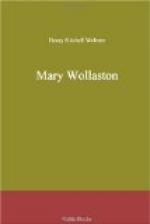She heard the talk that followed the polite rustle of applause at the first intermission, without being irritated by it, without even listening to what it meant, though here and there a phrase registered itself upon her ear. Henry Craven’s “Very modern, of course. No tonality at all, not a cadence in it,” and Charlotte Avery’s “No form either. And hardly to be called a song. A tone poem, really, with a part written into it for the voice.”
The music began again, and now was given ungrudging credit for the recreation of her mood. Only its admitted beauty created a longing which it did not serve to satisfy. The cold open sky with its mysterious interstellar spaces, the flow of the black devouring clouds, the reemergence of the immortal Pleiades, remote, inhuman, unaware, brought no tranquillity but only a forlorn human loneliness.
On that note it ended, but Paula, with a nod to Novelli, directed him to go straight on to the love song. The two do not form a sequence in the poem; indeed the love song occurs very early in it and the Burial of the Stars comes afterward, nearly at the end. But I think, as March did, that Paula’s instinct was sound in using the unearthly Schubert-like beauty of the Burial of the Stars as a prelude to the purely human passion of the love song.
It is, I suppose, one of the supreme lyric expressions in the English language of the passion of love. Furthermore, Whitman’s free unmetered swing, the glorious length of his stride, fell in with March’s rhythmic idiom as though they had been born under the same star.
The result is one of those happy marriages so rare as to be almost unique, in which the emotional power of a great song is enhanced by its musical setting, and where, conversely, a great piece of lyric music gains rather than loses by its words.
March did not use the whole poem. His setting begins on the line “Low hangs the moon,” and ends with the “Hither, my love! Here I am! Here!” Why he elected not to go on with it, I don’t know. Possibly, because his own impulse was spent before Whitman’s; possibly, because he did not wish to impose the darker melancholy of the latter stanzas upon the clear ecstasy of that last call.
It lost something, of course, from the inadequacy of the piano transcription, for it was conceived and written orchestrally. Paula, too, has given finer performances of it;—indeed, she sang it better a little later that same evening. But spurred as she was by the knowledge that the composer was listening to it and by her determination to win a victory for it, she flung herself into it with all the power and passion she had.
I doubt whether any other auditor ever is more completely overwhelmed by it than Mary was. It was so utterly her own, the cry of it so verily the unacknowledged cry of her own heart, that the successive stanzas buried themselves in it like unerring arrows. The intensity of its climax was more poignant, more nearly intolerable, than anything in all the music she had ever heard. Limp, wet, breathless, trembling all over, she sat for a matter of minutes after that last ineffable yearning note had died away.




